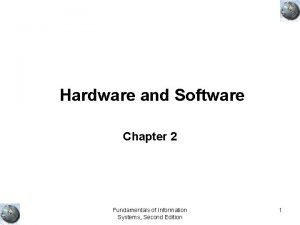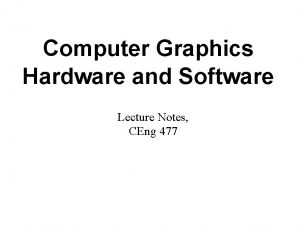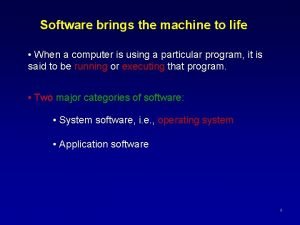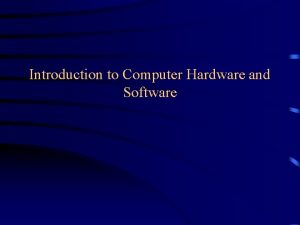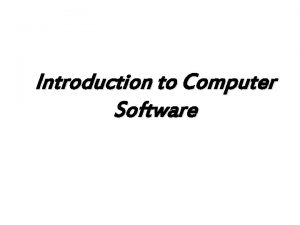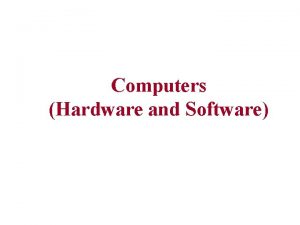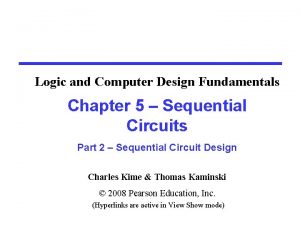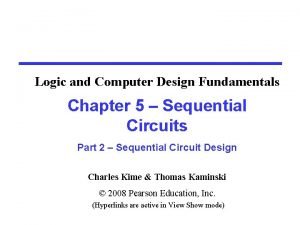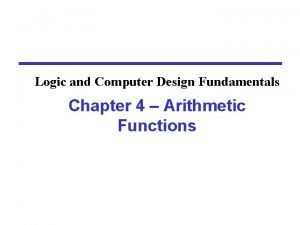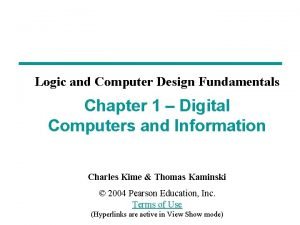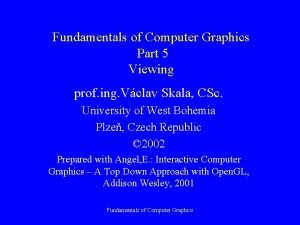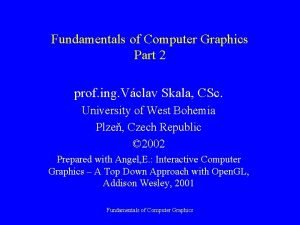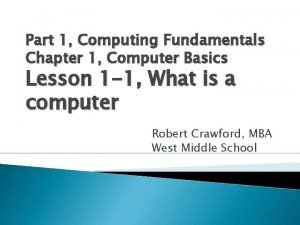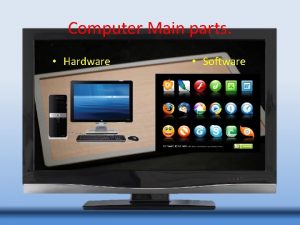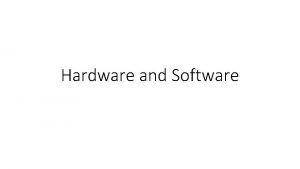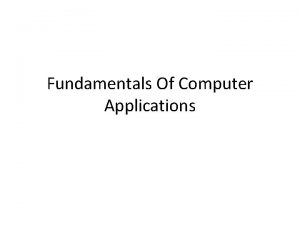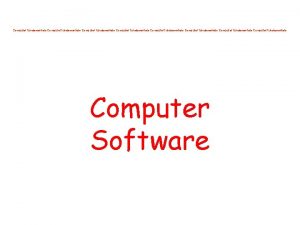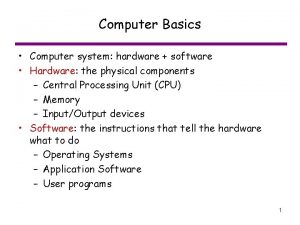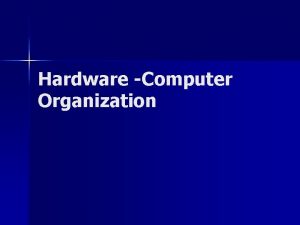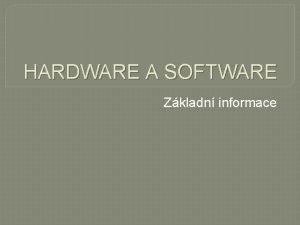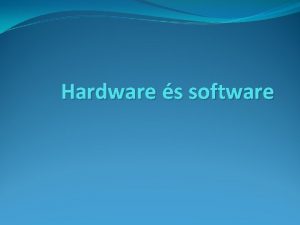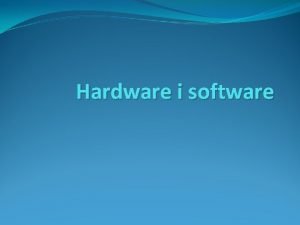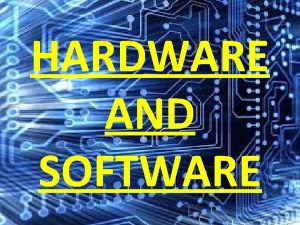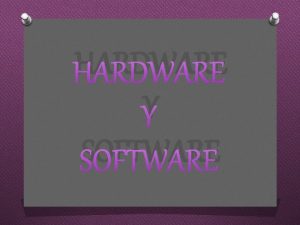Fundamentals of Computer Hardware software Software Software Distinguish














- Slides: 14

Fundamentals of Computer Hardware & software Software

Software � Distinguish between the two categories of software. � Define application software � Give examples of types of application software � Explain the terms ◦ ◦ ◦ General-purpose Integrated Specialised Custom-written

Software Categories � Application Software ◦ These are programs developed to carry out specific tasks or solve particular problems. � System Software ◦ Manages and supports the resources and operations of a computer system. It enables the running of application software and management of system resources.

Application Software � Examples ◦ ◦ include: Entertainment software Home & personal software Productivity software Specialist software

General-purpose software � Also called “off-the-shelf” Not written for any specific business or organization but can be used or adapted to suit their specific needs. ◦ Usually well tested ◦ Relatively cheap � Example Spreadsheet and word-processing packages.

Integrated software �A set of related programs combined in a unified package that allows data to be transferred easily between the programs. ◦ Main advantage is the ease with which data can be transferred from one component to another using a cut/copy-paste operation. � Examples Microsoft Office, Microsoft Works, Sun Open. Office, i. Works

Specialised software � Software written for a specific task rather than for a broad application area. � Example payroll, expert systems, accounting programs, theatre and airline booking systems

Customised software � General-purpose software which has been modified to meet the needs of an individual or organization better. � Customized through the use of special codes or macros (which are short programs written to automate several steps in software) ◦ Usually written by experienced end users of the program.

Custom-written software (tailor-made) � Written by programmers within a company or contracted out to a software house to meet the specific needs of a company. � Every company is unique and may have unique needs, so a solution tailored to achieve the company’s goals, based on their specialized requirements offers advantages when compared to general-purpose packages.

System Software � There are two major categories of system software: � Operating System � Utility programs One textbook has a third… � Language translators

Operating System �A set of programs managing the operations of a computer, without which the computer cannot function. ◦ the term ‘booting’ refers to the process of loading the operating system into a computer’s main memory from disk. It remains in the main memory until the computer is turned off.

Types of Operating System � Linux � Microsoft � MSDOS Windows � OSX � OS/2 � Microsoft � Unix NT Server

Functions of the OS � Managing computer resources � Managing files and memory � Maintaining security � Managing tasks ◦ Multitasking (concurrent processes – running at the same time) ◦ Multiprogramming � Multiprocessing ◦ Time-sharing ◦ Batch Processing ◦ Real-time processing � Providing a user interface

User Interfaces � Command-driven ◦ User enters a command by typing in codes or words. � Menu-driven ◦ Allows the use of either a mouse, cursor-keys or keyboard to make a selection from a menu. � Graphical ◦ ◦ ◦ (GUI or WIMP) Windows Icons Menus Pointers Use graphic images, menus and keystrokes to choose commands, start programs, folders, files, tasks, procedures.
 Hardware and software fundamentals
Hardware and software fundamentals 0110100101
0110100101 Hardware and software for computer graphics
Hardware and software for computer graphics Software brings computer hardware life how
Software brings computer hardware life how Definition hardware software
Definition hardware software Hardware introduction
Hardware introduction A computer system consists of both hardware and software
A computer system consists of both hardware and software Design principles in software engineering
Design principles in software engineering Logic and computer design fundamentals
Logic and computer design fundamentals Fundamentals of logical computing formulation
Fundamentals of logical computing formulation Logic and computer design fundamentals
Logic and computer design fundamentals Logic and computer design fundamentals
Logic and computer design fundamentals Orthogonal projection in computer graphics
Orthogonal projection in computer graphics Fundamentals of computer graphics
Fundamentals of computer graphics Chapter 1 computer fundamentals
Chapter 1 computer fundamentals
